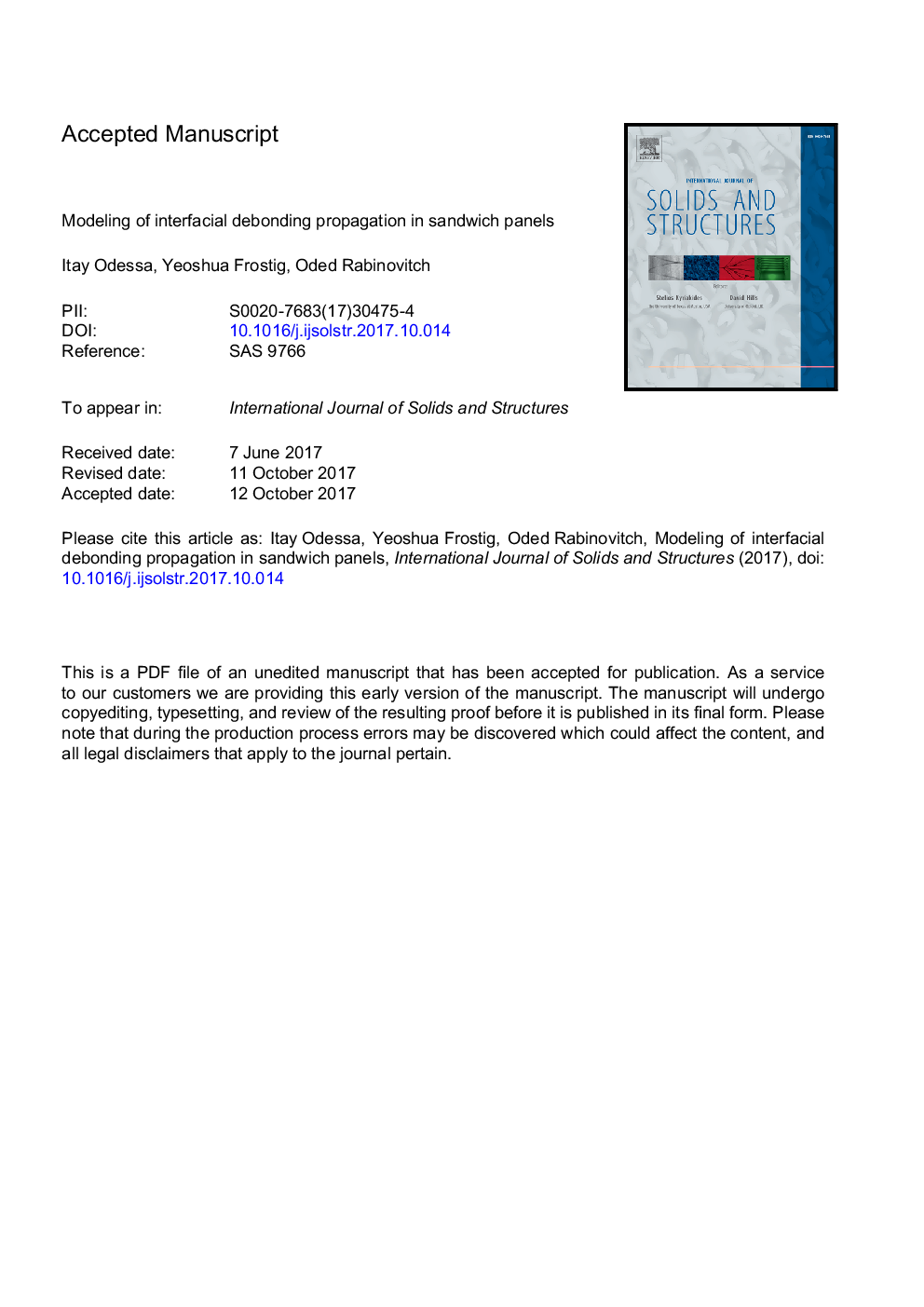| Article ID | Journal | Published Year | Pages | File Type |
|---|---|---|---|---|
| 6748212 | International Journal of Solids and Structures | 2018 | 49 Pages |
Abstract
The paper presents a nonlinear model for the analysis of the process of debonding between a face sheet and the core in sandwich panels. The model incorporates the Extended High-Order Sandwich Panel Theory with a cohesive interface modeling of the crack nucleation and propagation at the interface between a face sheet and the core. The derivation of the model combines the first order shear deformation kinematic assumptions for the face sheets with the high order small deformations kinematic assumptions that include out of plane compressibility for the core. The cohesive interfaces combine the components of the sandwich panel together and introduce the nonlinearity and the interfacial failure process into the model by means of nonlinear traction-separation laws. The properties of the cohesive interface are calibrated and the proposed model is validated through comparison with experimental results taken from the literature. Two cases that include the Double Cantilever Beam (DCB) and the Cracked Sandwich Beam (CSB) specimens are considered. In the DCB test, the panel is subjected to a global mode I loading, while in the CSB test is subjected to a loading scheme that yields a global mode II. On the local scale, a mixed mode is observed in the two tests. For the CSB case, contact constraints between the debonded face sheet and the core are also included. The comparison of the analytical results with the experimental ones focuses on the initial linear response, the nucleation of the interfacial debonding crack, and the propagation of the crack. The comparison validates the model and explores the deobnding failure process in sandwich panels.
Related Topics
Physical Sciences and Engineering
Engineering
Civil and Structural Engineering
Authors
Itay Odessa, Yeoshua Frostig, Oded Rabinovitch,
